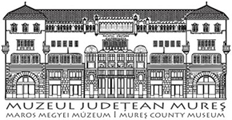Marisia - Maros Megyei Múzeum Évkönyve 29-30/2. (2010)
Zoology
COREOID BUGS OF “KIS BELA” COLLECTION PRESERVED IN TARGU-MURE§ NATURAL SCIENCE MUSEUM (INSECTA: HETEROPTERA: COREOIDEA) Florentina TOGÄNEL Muzeul de §tiinte!e Naturii Targu-Mure§, str. Horea nr. 24, RO-540036 Targu-Murej, Romania Abstract: In this paper is presented the list of “Bela Kis” coreoid bugs collection which contains 271 specimens belonging to 40 species from 25 genera, conserved in the Targu-Mure? Natural Science Museum. Keywords: Heteroptera, Coreoidea, Natural Science Museum Tärgu-Murej Introduction Coreoids are insects to the suborder Heteroptera, a group of about 40,000 species of insects in the Hemiptera (approximately 3000 heteropterans in Europe). Their name refers to the forewings, which are differentiated into a thickened basal area and a membranous apical region (called hemelytra). The hindwings are entirely membranous. In Heteroptera the mouthparts are elongate and slender, forming a sucking mechanism. Data on species belonging to the superfamily Coreoidea were published in our country since the second half of the nineteenth century. The data shown in the faunal lists on heteropterans from Dobrogea (published by G. Horvath, AL Montandon, M. Jaquet, O. M. Reuter), Moldavia and Wallachia (A. L. Montandon), Transsylvania (G. Horvath, Z. Szilady, A. Lorincz) and Banat (I. Fivaldszki) were synthesized by Horvath in a study published in 1897. In the early twentieth century Heteroptera is one of the most well-known groups of insects because of research conducted by Horvath and Montandon. (B. Kis 1984). Since 1930 the important works about this group were published by Sienkiewicz (1956-1964), Negru (1967, 1968), Kis (1972-2ool), Schneider (1973, 1976). Beetven 1955 and 1964 I. Sienkiewicz resumed the heteropteran study completing the knowledge of this insects group in Roumania. Bela Kis who published the comprehensive treatises about the species of the superfamiles Pentatomoidea (1984), Coreoidea and Pyrrocoroidea (2001), have a great contribution to the knowledge of the Romanian bug fauna. Coreoid bugs have four-segmented antennae, a beak, distinct ocelli, and many veins in the membrane. Coreoid bugs are spread on all types of biotopes, but they prefer the sunny M A R I S I A, XXIX-XXX, p. 109-115
